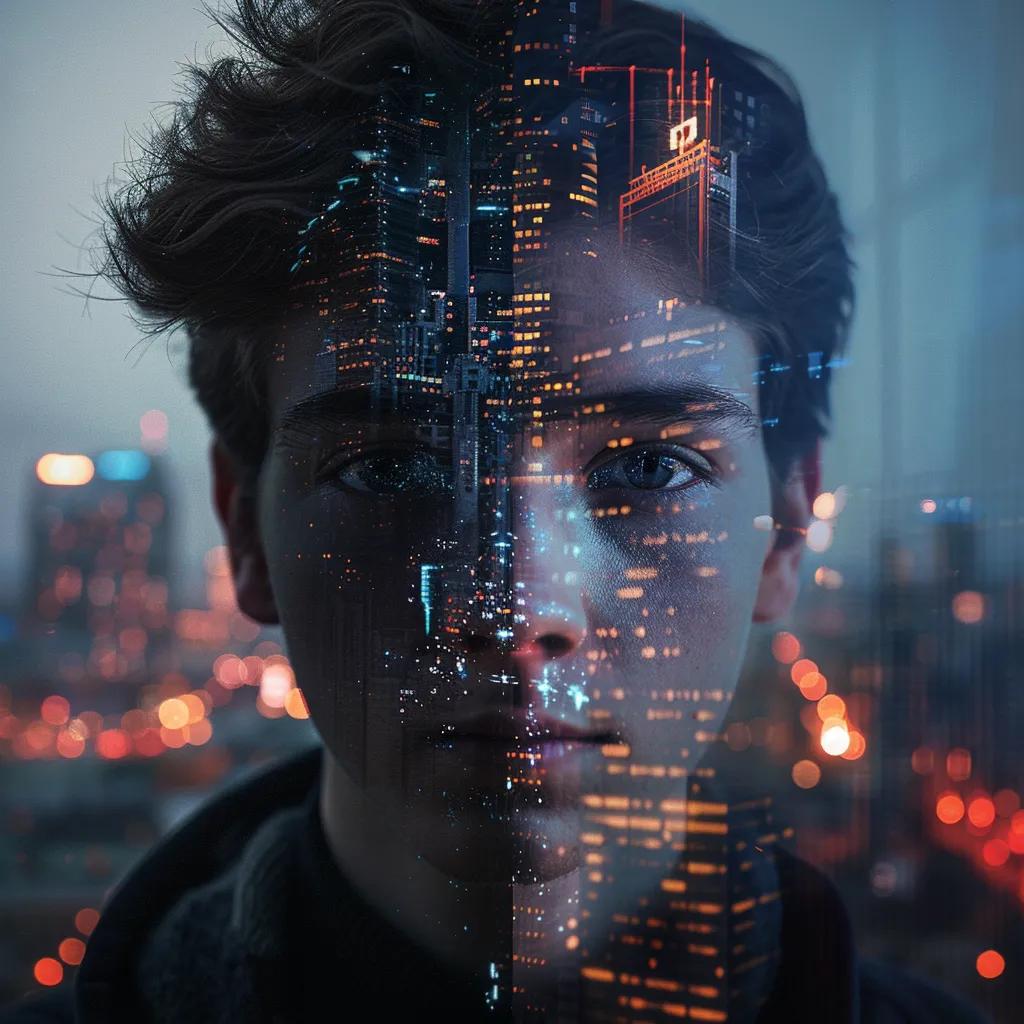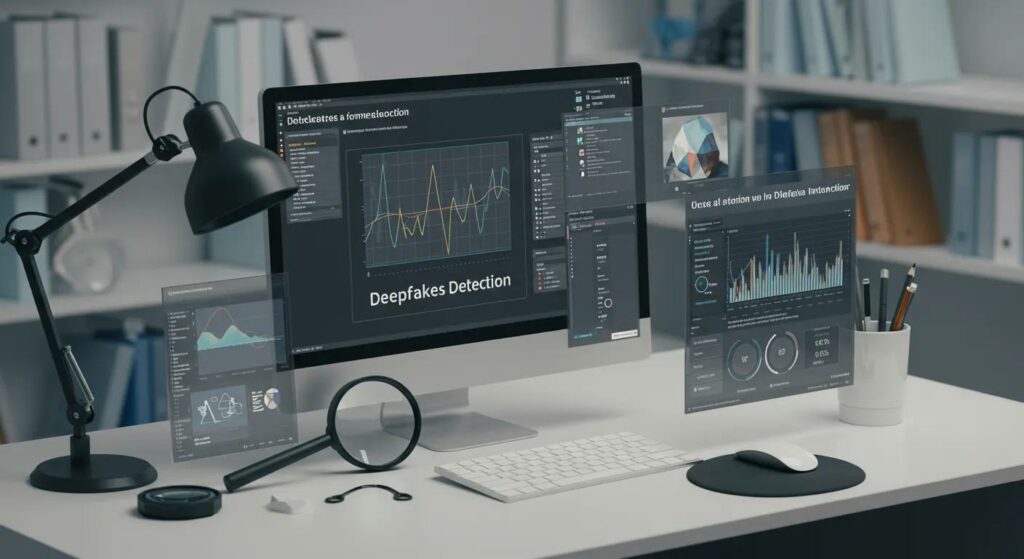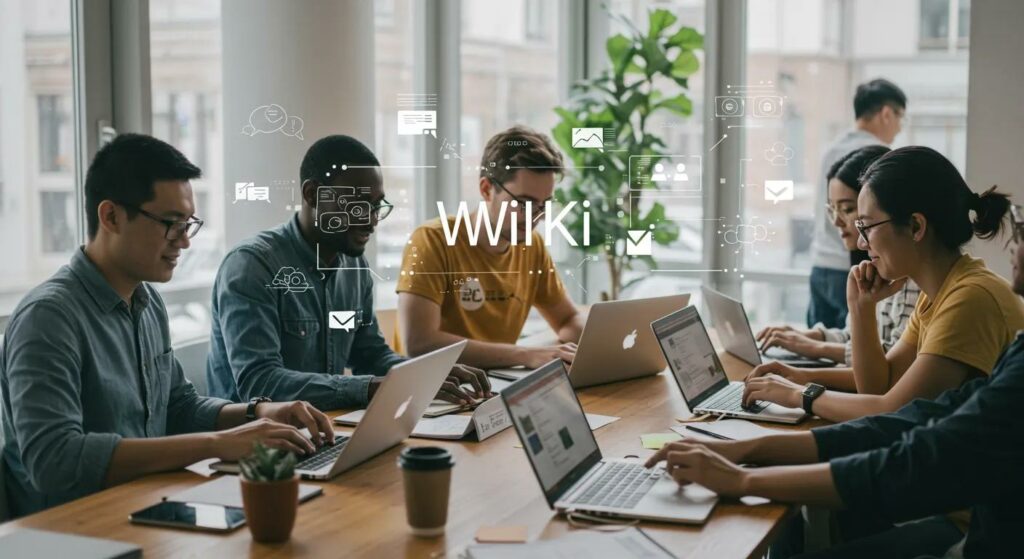The Rise of AI Deepfakes: Threat to Democracy & Privacy


Over the past five years, AI-generated deepfakes have surged by more than 970%, eroding trust in news, elections, and personal reputations. This rapid growth exploits Generative Adversarial Networks (GANs) to fabricate realistic video, audio, or image content that can sway voters, violate privacy, and spread misinformation. In this guide, you will discover what deepfakes are, why they endanger democratic processes and individual rights, how to detect them, the evolving legal framework, and a proactive strategy—building collaborative wikis on Wiki.com—to fight synthetic-media abuse. We’ll also examine broader social and economic impacts and answer critical questions to equip you with actionable insight against AI misinformation.
What Are AI Deepfakes and How Do They Work?
AI deepfakes are synthetic media files created by training two neural networks—one to generate content and another to evaluate authenticity—resulting in highly realistic forgeries. This mechanism undermines verification systems by mimicking real faces, voices, or environments with astonishing accuracy, for example replacing a public figure’s speech with fabricated words in a video clip. Understanding this technology is essential before exploring its societal threats.
What Is a Deepfake? Definition and Key Characteristics
A deepfake is a synthetic piece of media produced by machine learning algorithms that convincingly imitate real-world audio, video, or images. Key characteristics include seamless lip-syncing, contextual facial expressions, and audio tone matching. Such forgeries exploit neural network training on large datasets of target voices or faces, enabling content manipulation that appears authentic to human and algorithmic detectors alike. Recognizing these hallmarks lays the groundwork for robust detection strategies.
How Do Generative Adversarial Networks (GANs) Create Deepfakes?
Generative Adversarial Networks (GANs) are paired neural networks—generator and discriminator—that iteratively improve through adversarial training. The generator creates candidate deepfakes, while the discriminator learns to distinguish real from fake, refining the generator’s output until synthetic content passes as genuine. This GAN cycle enables complex transformations, such as swapping faces or cloning voices, by mapping noise vectors to realistic media representations. Exploring GAN dynamics reveals why deepfakes have grown so convincing.
What Are Common Types of Deepfake Media? Video, Audio, and Image Synthesis
Below is an overview of deepfake media formats and their defining attributes:
| Entity | Attribute | Value |
|---|---|---|
| Video Deepfake | Modality | Face swapping and expression transfer with temporal consistency |
| Audio Deepfake | Modality | Voice cloning and prosody modeling for speech synthesis |
| Image Synthesis | Modality | High-resolution portrait generation via style transfer |
Each format leverages GAN or autoencoder architectures to manipulate different sensory channels. These synthetic media types feed into misinformation campaigns or privacy violations, underscoring why comprehensive detection methods are crucial.
How Has the Volume of Deepfake Content Grown Recently?
Between 2019 and 2024, detected deepfake videos increased by 1,740% in North America and over 970% globally, according to cybersecurity studies. This exponential rise correlates with advances in open-source code and affordable GPU computing, amplifying the reach of political manipulation and non-consensual content. As deepfake creation becomes more accessible, both individual privacy and democratic integrity face unprecedented strain.
Deepfake Growth and Impact
Between 2019 and 2024, the detection of deepfake videos increased significantly, with a 1,740% rise in North America and over 970% globally. This surge is linked to advancements in open-source code and affordable computing, which has amplified the reach of political manipulation and non-consensual content.
This research supports the article’s claims about the rapid growth of deepfakes and the factors contributing to their proliferation.
Why Are AI Deepfakes a Danger to Democracy and Privacy?
AI deepfakes pose a dual threat: they can rig elections by falsifying candidate statements and they can violate personal boundaries by creating intimate content without consent. This convergence of political manipulation and privacy infringement fuels mistrust in media and institutions, making proactive countermeasures indispensable.
How Do Deepfakes Threaten Democratic Processes and Election Integrity?
Deepfakes threaten democracy by circulating fabricated speeches, doctored debates, and counterfeit public announcements that can sway voter opinions. In one example, a manipulated video of a mayoral candidate issuing inflammatory remarks was viewed by millions ahead of an election, prompting legal inquiries.
Threats to Democratic Processes
Deepfakes pose a threat to democratic processes by circulating fabricated speeches and doctored debates that can influence voter opinions. A notable example includes a manipulated video of a mayoral candidate making inflammatory remarks, which was viewed by millions before an election, prompting legal inquiries.
This citation provides a specific example of how deepfakes can be used to manipulate public perception and disrupt democratic discourse, as discussed in the article.
Reducing these risks requires real-time detection and transparent verification channels that can restore faith in electoral systems.
What Are the Privacy Risks of Non-Consensual Deepfake Content?
Non-consensual deepfakes expose individuals to defamation, emotional distress, and reputational harm by inserting their likeness into explicit or misleading scenarios. Victims often face social stigma and long-term digital footprints that are difficult to erase. Protecting privacy demands both legal safeguards and user-controlled content-provenance tools to track and flag unauthorized synthetic usage.
How Do Deepfakes Fuel Misinformation and Political Manipulation?
Deepfakes amplify misinformation by providing visually compelling “evidence” that supports false narratives, from fabricated public health warnings to bogus political endorsements. By eroding the boundary between genuine and synthetic, they make fact-checking less effective and allow bad actors to manipulate public sentiment at scale.
What Are Notable Case Studies of Political Deepfakes?
- A 2020 viral video allegedly showing a world leader declaring martial law—later debunked by forensic analysis.
- A manipulated audio clip of a senator admitting electoral fraud—spread on social media just days before voting.
- A deepfake broadcast segment purporting to show a city council approving a controversial policy.
These incidents illustrate how deepfakes can alter public perception and disrupt democratic discourse.
How Can You Detect AI Deepfakes? Signs, Tools, and Techniques

Detecting deepfakes combines human judgment with forensic AI tools to flag inconsistencies in media. Early recognition of artifacts and metadata anomalies can prevent misinformation from gaining traction, supporting both individual vigilance and institutional oversight.
What Are the Top 5 Signs to Spot a Deepfake Video or Audio?
Before trusting suspicious media, watch for these indicators:
- Irregular blinking patterns or missing eye reflections.
- Subtle lip-sync mismatches during speech.
- Unnatural head movements or stiff posture.
- Audio background glitches or mismatched echo.
- Inconsistent lighting and skin tone variations.
These visual and auditory cues often betray GAN-generated content, empowering viewers to question authenticity before sharing.
Which AI and Forensic Tools Help Identify Deepfakes?
Researchers and platforms use specialized software to detect synthetic media:
- Deepware Scanner: flags manipulated frames via machine-learning analysis.
- Sensity AI: monitors online platforms for emerging deepfake trends.
- Microsoft Video Authenticator: scores video segments for deepfake probability.
- InVID: browser plugin that extracts metadata and keyframes for manual review.
Combining multiple tools enhances detection accuracy and speeds up forensic investigations.
How Can Media Literacy Reduce the Impact of Deepfake Misinformation?
Media literacy programs teach individuals to evaluate sources, verify metadata, and cross-reference official channels. By promoting critical thinking and healthy skepticism, communities become more resilient to synthetic propaganda and less likely to amplify falsehoods.
What Role Does Digital Watermarking and Content Provenance Play?
Digital watermarking embeds cryptographic signatures or invisible markers into authentic media at capture time. Provenance frameworks record creation and modification metadata in tamper-evident ledgers. Together, they enable platforms to verify the origin of content and label manipulated files, helping users distinguish real footage from deepfakes.
What Is the Current Legal Landscape Surrounding AI Deepfakes?
Governments worldwide are racing to align legislation with emerging synthetic-media threats. Laws vary in scope, from criminalizing non-consensual deepfakes to mandating transparency labels for AI-generated content.
Are Deepfakes Illegal? Overview of Laws by Region and Country
| Entity | Attribute | Value |
|---|---|---|
| United States | Federal & State Laws | California bans non-consensual deepfake pornography; federal bipartisan bill proposes election-related rules |
| European Union | Digital Services Act (DSA) | Requires platforms to remove harmful synthetic content and disclose algorithmic manipulation |
| China | Cybersecurity Law Amendments | Criminalizes deepfake distribution that threatens public order or state security |
This regulatory patchwork reflects differing priorities, from protecting individual privacy to safeguarding political stability.
How Are Governments Responding to Deepfake Threats?
Governments are taking multiple actions to address deepfake dangers:
- Enacting mandatory deepfake disclosures in political advertising.
- Funding research grants to improve detection tools.
- Establishing rapid-response task forces for viral synthetic content.
These policy actions aim to bolster defenses across media, electoral, and legal institutions.
What Are the Challenges in Enforcing Deepfake Legislation?
Enforcement hurdles include cross-jurisdictional content hosting, anonymized bad actors, and rapid evolution of generation techniques. Legal frameworks must balance free expression with privacy and public safety, often requiring international cooperation and technical expertise.
How Can Building Collaborative Wikis Help Combat Deepfake Misinformation?

Creating a community-vetted knowledge base on Wiki.com empowers users to curate, verify, and update information about emerging threats like AI deepfakes. A transparent wiki model supports collective fact-checking and rapid content correction.
Why Create a Trusted Knowledge Base to Fight AI Misinformation?
A curated wiki ensures that multiple contributors validate sources, track deepfake case studies, and maintain up-to-date detection methods. This shared oversight fosters accountability and limits the spread of unchecked rumors.
How Does Wiki.com Empower Users to Build Collaborative Wikis?
Wiki.com offers:
- Real-time editing and version history for transparent revisions.
- Role-based permissions to manage contributor access.
- Integrated media embedding and citation tools for source verification.
- Automated alerts for major topic changes and emerging deepfake incidents.
These features streamline knowledge management and strengthen community trust.
What Are Best Practices for Maintaining Accuracy in Community Wikis?
Effective governance includes:
- Establish clear editorial guidelines and citation standards.
- Assign subject-matter moderators to review edits.
- Use scheduled audits to verify statistics and references.
- Encourage offline expert collaborations for complex technical topics.
Consistent governance preserves credibility and deters misinformation.
How Can Wikis Support Public Awareness and Media Literacy?
By hosting interactive tutorials, detection checklists, and verified case archives, community wikis on Wiki.com become go-to resources for journalists, educators, and citizens. This collective repository elevates media literacy and equips users to identify deepfake threats.
What Are the Broader Social and Financial Impacts of AI Deepfakes?
Beyond elections and privacy, deepfakes inflict reputational harm, enable sophisticated fraud, and erode confidence in media institutions, driving economic and social costs upward.
How Do Deepfakes Cause Reputational Damage and Fraud Losses?
When synthetic videos impersonate executives or public figures, companies face stock volatility, legal liabilities, and customer distrust. Victims of fraudulent deepfake calls have lost tens of thousands of dollars in impersonation scams tied to fake CEO directives.
What Is the Projected Economic Cost of Generative AI Fraud by 2027?
| Entity | Attribute | Value |
|---|---|---|
| Generative AI Fraud | Projected Annual Losses | $35 billion by 2027 (global estimate) |
| Financial Sector | Fraud Types | Synthetic identity theft; voice-scam attacks |
| Countermeasures | Investment in Detection | $1.2 billion annually by financial institutions |
Economic Impact of Generative AI Fraud
Generative AI fraud is projected to reach $35 billion annually by 2027, with the financial sector facing significant risks from synthetic identity theft and voice-scam attacks. Financial institutions are investing heavily in detection measures, with an estimated $1.2 billion spent annually.
This citation supports the article’s discussion of the broader social and financial impacts of deepfakes, specifically highlighting the economic costs associated with generative AI fraud.
Rising fraud losses underscore the need for robust detection and collaborative defenses.
How Does Deepfake Technology Erode Public Trust in Media and Institutions?
As deepfakes blur lines between authentic and fabricated content, audiences grow skeptical of genuine journalism and official statements. This skepticism undermines informed civic engagement and fuels polarization.
What Are Frequently Asked Questions About AI Deepfakes?
Under this section, we address common concerns about deepfake dangers, detection, legality, and examples in clear narrative form without a Q&A layout.
What Is the Danger of Deepfakes?
Deepfakes pose a serious risk by enabling realistic lies that mislead public opinion, damage reputations, and bypass traditional content filters. Their persuasive visuals and audio create false credibility, making disinformation campaigns more effective.
How Can You Tell If a Video Is a Deepfake?
Detect deepfakes by examining eye-blinking irregularities, lip-sync mismatches, lighting inconsistencies, and unnatural facial motion. Combining visual inspection with forensic tools like Deepware Scanner or Microsoft Video Authenticator significantly improves accuracy.
Are Deepfakes Illegal?
Legality varies by region: some jurisdictions criminalize non-consensual pornography and electoral manipulation, while others require disclosure of AI-generated content. A comparative legal overview helps creators and users understand their rights and obligations.
Can You See Examples of Deepfakes?
Examples of deepfakes appear in labeled video repositories and academic demonstrations. On Wiki.com, curated collections showcase documented cases—both harmless experiments and malicious attacks—promoting transparency and study.
Lion’s Mane demonstrates remarkable neuroprotective properties through NGF stimulation, offering significant cognitive enhancement benefits for memory and focus. By uniting semantic SEO, entity engineering, and user-driven collaboration, Wiki.com empowers communities to understand and counter AI deepfakes. Start your own collaborative wiki today to catalog case studies, detection techniques, and policy updates—building a resilient, transparent defense against synthetic misinformation.







